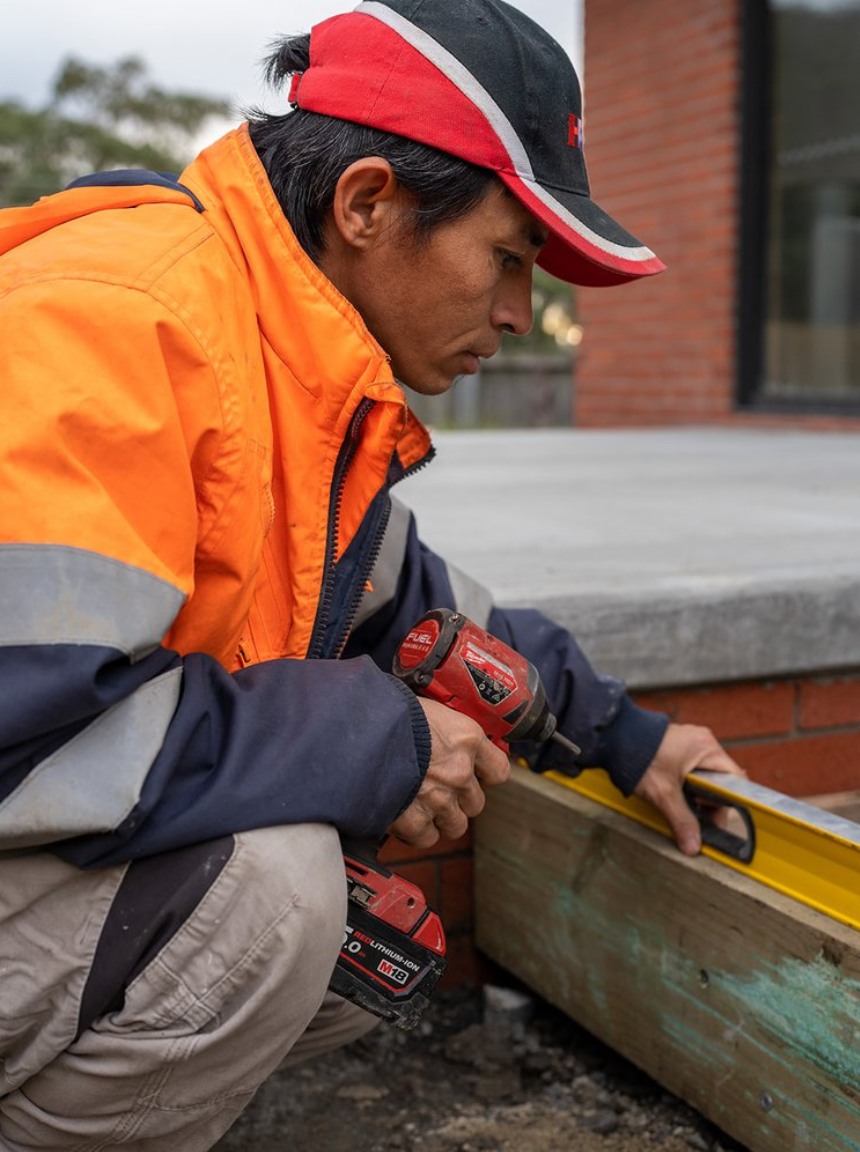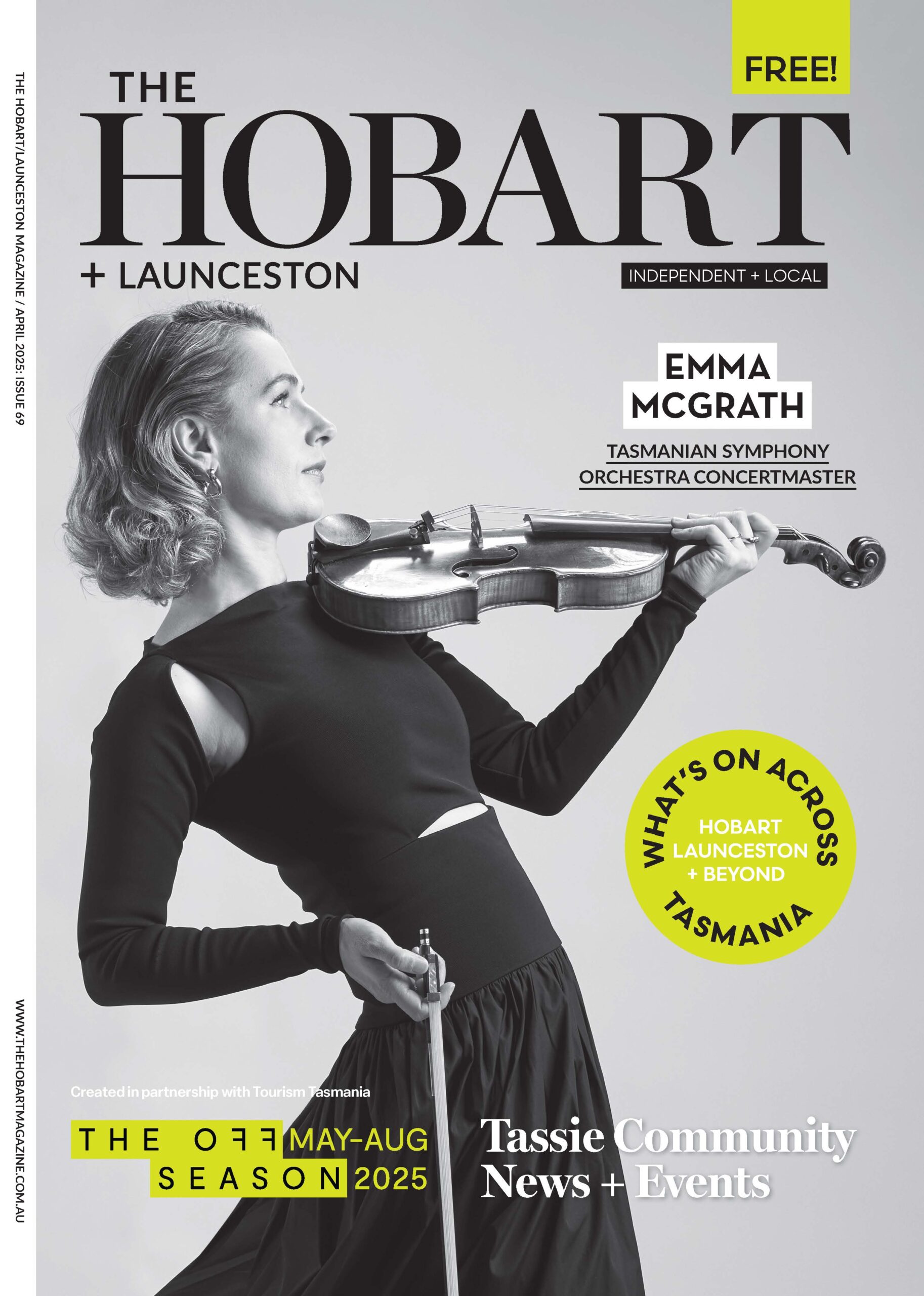The Piano Man Building Futures for Migrant Workers in Hobart
by Lily Whiting

Worker shortage is currently universal, there isn’t an industry that’s exempt. For Kelvin Smith, four years ago he decided there was a very obvious solution to the shortage facing the construction industry, and all that was needed was a little time, empathy and a helping hand. Integrate Workforce is a Hobart-based labour company with one requirement: a refugee/ migrant background. He’s also the outdoor piano man in his free time.
How does Integrate Workforce differ from other construction companies? We’re a unique labour hire company designed to give people with a refugee background temporary work/training. We simultaneously operate as an employment agency and look for full time work for them. Both construction and civil companies can use us as a labour hire company and as a place from which to ’try before you employ’ new employees. For people who speak English as a second language (ESL), they can simply show their capacity to prospective employers while on their worksites.
How many people do you employ? We started in February 2021 and 40 workers have come through our books in that time, with 16 on different sites across Hobart currently. Of our 40 friends, 14 have received full time work or apprenticeships with other companies through their work with us, with another three on schedule to do the same in January. Very excitingly, three employees have secured home-loans as a result of their employment with us!
Do workers stay with you or do you assist them into other pathways? Our “pathway” is essentially a commitment from us to stick with them and to do everything necessary to help them find long term work. Beyond physical training, we help guys to think beyond casual employment to an apprenticeship or career of their choice. It takes a few weeks to get their head into that space, this often becomes a very exciting conversation. We introduce them to prospective employers, then after a trial period we transition their employment to the new employer. In addition to this, we have recently designed and started a mini apprenticeship – a one year employment and an assisted Certificate II-IV in Construction through the Migrant Resource Centre. This program started in November and has six of our employees in it currently.

How do you operate day to day? Each day I organise the workload, worksites, tools and our guys, doing my best to match skill sets, personalities etc with the tasks at hand. This usually involves 8-12 worksites spread out across Greater Hobart. I try to identify some training opportunities amongst the workload and ensure our guys are being upskilled along the way. I also pair up people that have been with us for some time with newer guys so they can also train/be trained and most of our guys still work with regular site supervisors from the construction companies. I try my best to fill some of the communication gaps if needed. My wife Kath handles all the bookwork, setting up employee profiles, matching hours with worksites, pays, invoicing etc – a mammoth task with ESL people. Essentially what this means is that we live in organised chaos!
What was your experience working with individuals from a migrant/refugee background prior to starting Integrate Workforce? I’ve done a fair bit of work among churches in Indonesia, about 80 weeks across 10 years. The country had a massive shift towards Christianity, so I was helping to build a leadership training network in hopes of diffusing any potential religious friction. I became quite familiar with communication through broken English, gestures and gaining clues from sentence structure that seems to be somewhat similar throughout Asia. I also learned to minimise the awkwardness that happens when communication isn’t working…shrug it off, laugh it off – and ideally help them laugh also. For employment it is very important that attempts to use English are encouraged!
What are common barriers for people with refugee/migrant backgrounds to finding employment? Incidentally barriers to employment are not necessarily the same as the difficulties non-migrants find in the workplace. Without English, a person doesn’t really have a chance at getting or answering questions at an interview. There is a perception that non-English speaking people are less intelligent which is obviously entirely not true. An employer most often needs an employee to do the work but they often need them to be ‘likeable’ and ‘get along’ with the other guys, regardless of competence or capacity in other areas. ESL can create awkward moments that many employers don’t want on their worksites but really only need some time to smooth over. Some companies are simply just worried if safety requirements will be understood and maintained.
For people new to Hobart, surely even getting to a worksite must be a difficult experience? Navigating to a worksite can be more difficult than you would think, especially when working in new subdivisions that are not on Google Maps yet. Most migrants will have an automatic car licences and construction company utes are often manual. It takes a huge amount of courage for them to actually walk onto the worksite if I’m not there – and I can’t be on 8-12 sites all at once! 90% of our new employees make it or break it based on their ability to muster the necessary courage to enter the workspace.

How has working in a culturally diverse workplace changed your approach to work and life? I’ve been inspired by the determination of so many of our guys to step up and meet the daily challenges that they face. 16 years ago, one of our workers Paw Nay and his community were being regularly shot at by the Myanmar army.
After arriving in Australia, Paw Nay has helped hundreds of Burmese settle into Hobart and was our original primary source for me in finding employees. He now has a full time job with Kelly Civil and in September, he purchased a block of land in Berriedale and recently he signed a building contract for a house. He has helped 40-50 people get their driver’s licence, did the study necessary to become a pastor at Hobart Baptist Church, and is giving back to the community of Hobart by helping everyone and anyone daily. And that is just one story. At another level, I go to bed each night with a plan for the following day and everything organised. But I’m constantly on edge, as the plan can and does turn to shite very quickly – the plan is nearly always on a knife edge. I guess I’m saying we must be successful as many companies use us and love us for the work that we do, but the pressure to have all of my guys ‘productive’ (earning their wage) all of the time is a heavy load that is sometimes overbearing.
What are your favourite moments of transformation to see in your workers when they come onboard? I love the little step up surprises. At least five of my guys that I was near certain would fail for various reasons within their first month have proved to be really valuable employees. Each day I was preparing the extra supports that they need to do their job and then, without me noticing, the supports become unnecessary and they’re flying on their own! As a business, every time an employee leaves us we are equally sad but happy for the opportunity to do more.
In a bit of a segue – you’re also known for your piano playing around Tasmania. What does playing the piano provide you as an outlet to the chaos of life? Piano is my happy place – forget about everything for a moment or two. Almost every day I play for 20-30 minutes just to de-stress and chill out. Piano allows me to disappear into the music. I have a few favourites that when I play just right will send shivers up my spine and any life chaos or stress is a million miles away! It’s kind of like pressing reset on the stress-meter.
Any hints on where you’ll be hung/ perched/submerged with your piano next? Over the past few years, I’ve had some incredible experiences with the piano, but they are all just a bit sideways from what I was originally doing. So in the next few months I want to get back to the roots. Chilling, playing the piano in beautiful unexpected places for the 6-8 people and the pademelons and birds who happen to be there.
You can follow more of Kevin’s musical adventures on Facebook, search ‘A Piano of Tasmania’ . He plays in some pretty spectacular locations…like hanging from a helicopter or in the middle of the bush!

